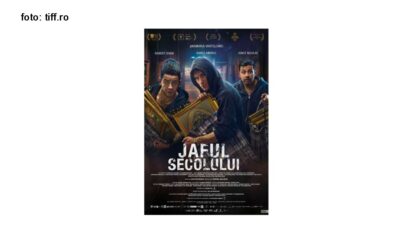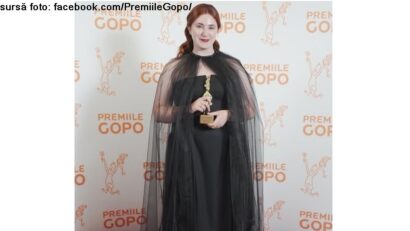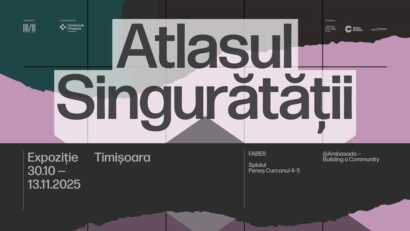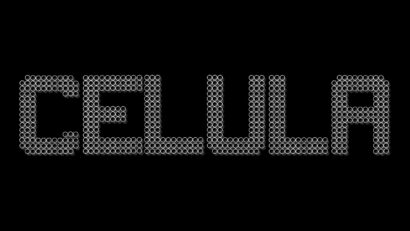Exhibitions by artist Ștefan Câlția
The end of 2021 saw two simultaneous exhibitions by the Romanian artist Ștefan Câlția
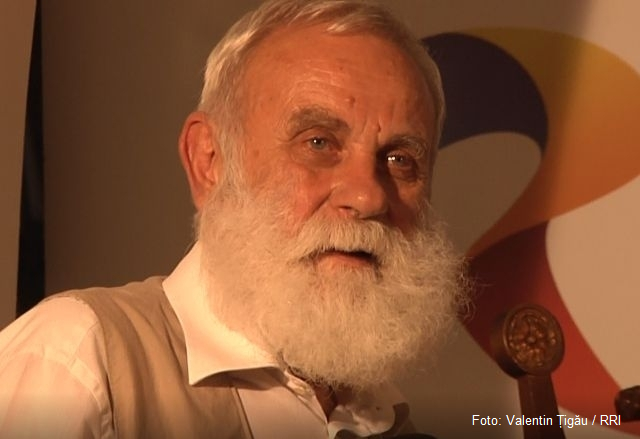
România Internațional, 01.01.2022, 12:53
The end of 2021 saw two simultaneous exhibitions by the Romanian artist Ștefan Câlția: Border Blue, in Bucharest, and Glajarie. Close to craftsmanship in Iasi, north-eastern Romania. Two faces of the same creator in two exhibitions, one of paintings and the other one of glass items, made using an old manual technique, known as glajarie.
A fine arts graduate, formed by the great painter Corneliu Baba, Stefan Caltia has always defined himself as a painter of the sky, and critics have usually described his style as fantastic realism. His main themes are the island, the flight, hieratic characters and Christian symbols.
Curator Vladimir Bulat told us a few things about the painting exhibition titled Border Blue:
This exhibition in Bucharest is small and compact, but very intense from all points of view. For example, in just a few works, the artist covers half a century of creation. Of course, it was not the artist’s intention, it was my curatorial intention to show this consistency and concern of the artist Ștefan Câlția for the habitat, for what housing means, for what a house stands for. He shows us that there is a certain scale of living, there is a certain size of the existential garment, which is the house. People used to build as much as they needed. And Ștefan Câlția wants to preserve this in his painting as well. I could say that this word border that I used as a title for the exhibition, refers to an outline, a limit, beyond which you almost cease to be human. That’s what I meant when I used the word border.Blue, on the other hand, is somehow a generic color of the Transylvanian village, as a means to highlight the Romanian specificity in the Austro-Hungarian Empire. In the rural area, the peasants had to paint their facades blue to show that they were Romanians. That’s kind of the administrative part of the blue dimension. When Ștefan Câlția re-arranged, together with Livia Câlția, his house in the village of Șona (central Romania), he returned to this ancestral blue because he found it everywhere in the first layers of the old houses. That blue was meant to bring him back to what was right, urging the other villagers to do the same. Or, his own house, is in fact an aesthetic project that he brings back to his own village. He left the village and returned. And he actually went back to where he left off, bringing a whole world back, from the way people built their homes to the way they dressed, ate, behaved, and interacted with each other, actually showing the indestructible harmony between the world and man. It seems that today the natural is the one you have to look for, the one that used to be and almost no longer exists. Above all, Ștefan Câlția is a huge public, an aesthetic and artistic consciousness. He expresses himself as a painter, but he says much more than a painter usually says.
Vladimir Bulat also told us about Ștefan Câlția’s artistic origins, the influences in his paintings and how the artist recreated his native village in his works:
Today, the villages in Oltenia are rather dull. But Ștefan Câlția, look, manages, for example, by cutting the facades, to cut a piece of sky in the shape of a house. The village is not just a bunch of houses where people live somehow impersonally, like in the city, where everyone lives in a cell, in a blocks of flats, and depersonalisation is at the maximum. The village has to function as a single organism. That is why, for example, Ștefan Câlția restored the blacksmith shop in the village. For the houses that are now being restored and then painted blue, at some point some metallic details are used that are made there, at the blacksmith shop that was reborn in the heart of the village. First of all, we have to understand that Ștefan Câlția is a painter, and the painter is not born in a desert. His work must be seen in context and somehow from a historical perspective. Here, in the exhibition, what was chosen is somehow a cut-out of what he worked on in 2021, but also things in which I wanted to show the continuity of certain themes.
Matei Caltia, Stefan Caltia’s son, is an artist himself and the one who curated the exhibition in Iasi. He told us about the concept that gave birth to the exhibition that pays homage to the old craft of glass blowing:
This is a project that we have worked on together this year, a project that we’d had in mind for many years and that we have now ventured into, a project that starts from his still lives and his stories about the craft of glass blowing in the South Transylvanian village where he was born. And so we put together a collection of 20 paintings featuring vases, objects of late medieval glassware, and in addition we tried all this spring-summer that passed, to look for shapes, to understand the craft and to make a first attempt to reconstitute, to rebuild these vessels. The exhibition contains almost 150 such glassware. The craft of glassmaking is mainly found in Transylvania, due to the nobility there and the fact that they were part of the Habsburg Empire. Later, these traditional glass blowing shops were bankrupt by the advent of factories and mechanised processes, which changed the way glass was made in order to produce larger quantities. So, to a large extent the craft was lost.

